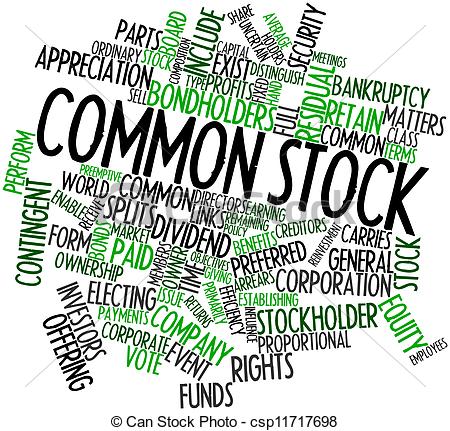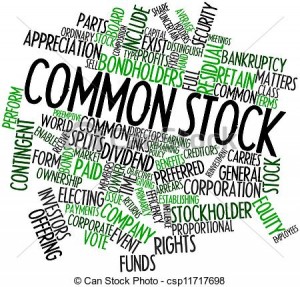Common Stock
1)There is usually a stated value on each stock certificate called the par value. The total par value is the number of shares issued multiplied by the par value of each share and is referred to as the dedicated capital of a corporation.
2)Capital surplus: refers to amounts of directly contributed equity capital in excess of the par value. In most states the par value is locked in and cannot be distributed to stockholders except upon the liquidation of the corporation.
3)The shares bought back are called treasury stock.
4)Cumulative voting: the effect of it is to permit minority participation. Straight voting can freeze out minority shareholders; that is the reason many states have mandatory cumulative voting.
5)The payment of dividends is at the discretion of the board of directors. The payment of dividends is not a business expense. Dividends are paid out of after-tax profits of the corporation. Dividends received by individual shareholders are for the most part considered ordinary income by the IRS and are fully taxable.
6)Harry and Linda DeAngelo (1985) found that management’s holdings of common stock are usually tilted toward the stock with the superior voting rights. Lease, McConnell, and Mikkelson (1983) found the market prices of stocks with superior voting rights to be about 5% higher than the prices of otherwise identical stocks with inferior voting rights.
Click here for government certification in Accounting, Banking & Finance





9 Comments. Leave new
Good effort!
nicely explained…
Informative and well explained even when it is precise. This is what a good blog is all about. Great work !
Well explained..!
The points are precise and way too informative. The concepts of capital surplus and cumulative voting has indeed been very well explained. Impressive!
well written.
Nicely explained..
good article.. informative!
good one…